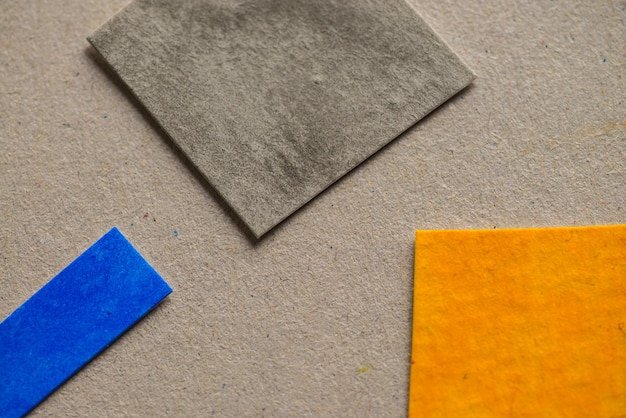Before diving into the details of cabinet selection, it’s important to understand the style of your kitchen. Are you aiming for a modern kitchen design, a traditional look, or something in between? Your kitchen’s style will play a significant role in determining the type of cabinets that will best suit your space. The style you choose will influence not only the materials and finishes of your cabinets but also the types of hardware and the overall color scheme of your kitchen.
Modern Kitchen Design
Modern kitchen designs often feature clean lines, minimalistic elements, and a focus on functionality. This style emphasizes simplicity and efficiency, often incorporating open spaces and an uncluttered look. If this style appeals to you, consider cabinets with sleek finishes, such as high-gloss or matte, which can enhance the modern vibe. Handle-less cabinets or those with simple, unobtrusive hardware can further enhance the modern aesthetic by maintaining a streamlined look. Additionally, modern kitchens often utilize innovative storage solutions to maintain their sleek appearance, integrating technology like soft-close hinges and smart organization systems.
Traditional Kitchen Style
If you’re drawn to a more traditional kitchen style, look for cabinets with intricate details, such as raised panel doors or decorative moldings. This style often embraces a warm and inviting atmosphere, with rich textures and classic elements. Wood finishes in warm tones can add a classic touch to your kitchen remodel, evoking a sense of timeless elegance. Traditional kitchens might also incorporate glass-fronted cabinets or open shelving to display fine china or decorative items, adding a personal touch. The use of antique or vintage-style hardware can further enhance the traditional aesthetic, creating a cohesive and charming look.
Material Matters
The material of your cabinets is another key consideration. Different materials offer various benefits in terms of durability, appearance, and cost. Choosing the right material can impact not only the longevity of your cabinets but also their maintenance requirements and how well they fit into your overall kitchen design.

Solid Wood Cabinets
Solid wood cabinets are a popular choice for their durability and timeless appeal. They provide a natural beauty that can be customized through staining or painting in a variety of colors to match your kitchen’s style. While solid wood cabinets tend to be more expensive, their longevity makes them a worthwhile investment, as they can withstand the wear and tear of daily use. Additionally, solid wood can be refinished or repainted over time, allowing you to refresh your kitchen’s look without replacing the cabinets entirely.
Plywood and MDF Cabinets
Plywood and Medium-Density Fiberboard (MDF) are cost-effective alternatives to solid wood. Plywood is strong and resistant to warping, making it a good option for cabinet boxes, especially in humid environments. MDF, on the other hand, provides a smooth surface ideal for painted finishes, offering a sleek and modern look. Both materials are budget-friendly and versatile, allowing for a wide range of styles and finishes. However, it’s important to consider the environmental impact of these materials and explore options that use sustainable or recycled content.

Custom vs. Stock Cabinets
When choosing cabinets, you’ll also need to decide between custom and stock options. Each has its pros and cons, so it’s important to weigh your priorities. Your choice will likely depend on factors such as budget, timeline, and the specific requirements of your kitchen space.
Custom Cabinets
Custom cabinets are tailored to your specific needs and kitchen layout. They offer unparalleled flexibility in terms of design, size, and material, allowing you to create a truly personalized kitchen space. If you have a unique kitchen space or specific storage requirements, custom cabinets may be the way to go. They can accommodate unusual layouts and integrate special features like built-in organizers or specialty drawers. However, they can be more expensive and take longer to manufacture and install, so it’s important to plan accordingly and work with a reputable cabinet maker to ensure quality craftsmanship.
Stock Cabinets
Stock cabinets are pre-manufactured and available in standard sizes and finishes. They are often more affordable and can be delivered quickly, making them a practical choice for those with budget or time constraints. If you’re on a tight budget or timeline, stock cabinets are a sensible option that still offers a variety of styles and finishes. However, they may offer limited options in terms of customization, so it’s essential to assess whether they can meet your specific needs and design preferences. Despite their limitations, stock cabinets can be enhanced with additional features or custom hardware to better fit your kitchen’s style.
Cabinet Installation
Once you’ve chosen your cabinets, the next step is installation. Proper installation is crucial to ensure your cabinets are functional and secure. A well-installed cabinet system not only looks great but also performs well, with doors and drawers operating smoothly.
Hiring a Professional
For a seamless installation, consider hiring a professional cabinet maker or installer. A skilled professional will ensure your cabinets are aligned, securely mounted, and properly adjusted, preventing issues like misaligned doors or uneven surfaces. Search for “cabinet maker near me” to find experienced professionals in your area who can provide expert advice and high-quality workmanship. A professional installer can also help troubleshoot any unforeseen issues during installation, saving you time and potential frustration.
DIY Installation
If you’re handy with tools and have some experience with home improvement projects, you might opt for a DIY installation. This can be a cost-effective option if you’re confident in your skills. Be sure to follow manufacturer instructions carefully and take precise measurements to avoid mistakes. Proper preparation, including ensuring your walls and floors are level and prepped for installation, is key to a successful DIY project. Additionally, having a second pair of hands to help with heavy lifting or aligning cabinets can make the process smoother and more efficient.
Optimizing Storage and Functionality
In addition to aesthetics, consider how your cabinets will function in your daily life. Here are some tips to optimize storage and functionality, ensuring your kitchen is as practical as it is beautiful.
Maximize Space with Smart Solutions
Incorporate features like pull-out shelves, lazy Susans, and deep drawers to make the most of your cabinet space. These solutions can improve accessibility and organization, making it easier to find and reach items, particularly in hard-to-reach corners or lower cabinets. Consider using drawer dividers or inserts to keep utensils and small items organized, and explore innovative options like toe-kick drawers for additional storage.
Consider Cabinet Layout
Think about the layout of your cabinets and how it fits into your kitchen’s workflow. An efficient layout will enhance your cooking and cleaning processes, making your kitchen more enjoyable to use. Place frequently used items within easy reach and consider the placement of appliances, such as the refrigerator and stove, in relation to your cabinets. This thoughtful planning can minimize unnecessary movement and create a more ergonomic and functional kitchen space.
Finishing Touches
The final step in choosing the right cabinets for your kitchen remodel is selecting finishes and hardware that complement your overall design. These details can significantly influence the final look and feel of your kitchen, adding personality and style.
Cabinet Finishes
Choose from a variety of finishes, including painted, stained, or natural wood. Your choice should align with the style of your kitchen and your personal preferences. A glossy finish can create a modern, sleek look, while a matte or distressed finish might be more suited to a rustic or traditional kitchen. Consider how your finish choice will coordinate with other elements in your kitchen, such as countertops, backsplash, and flooring, to create a harmonious design.
Hardware Selection
Hardware can add personality and style to your cabinets. Consider knobs, handles, and pulls in materials like stainless steel, brass, or ceramic to enhance your kitchen’s aesthetic. The choice of hardware can serve as a defining element, offering contrast or complementing your cabinet style. Experiment with different shapes and finishes to find the perfect match that completes your kitchen’s look and ensures comfort and ease of use.
Conclusion
Selecting the right cabinets for your kitchen remodel involves balancing style, functionality, and budget. By considering factors such as kitchen style, materials, custom versus stock options, and installation methods, you can make informed decisions that will enhance your kitchen’s beauty and utility. Whether you’re opting for a modern kitchen design or a more traditional look, the right cabinets can transform your space into a functional and inviting hub for your home. Taking the time to carefully plan and choose the right elements will ensure your kitchen remains a beloved and efficient space for years to come.
